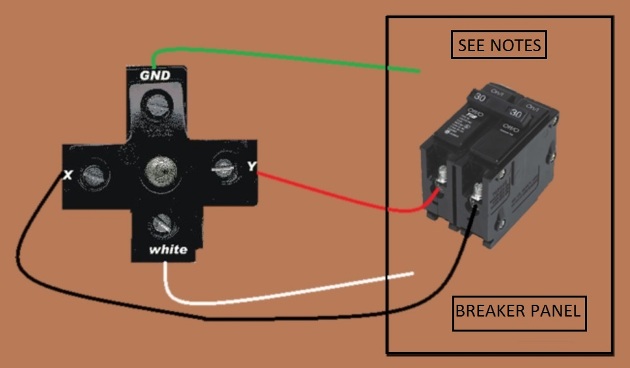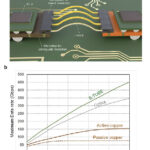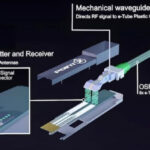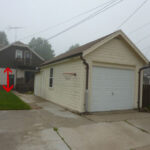If you’re installing a new dryer or replacing an old one, one of the most important questions to ask is:
What size wire do I need for my dryer?
Choosing the correct dryer wire size isn’t just about performance—it’s also about safety and compliance with electrical codes. In this guide, we’ll walk you through the basics of wire sizing for both electric and gas dryers, and help you avoid costly or dangerous mistakes.

what size wire for dryer
🔌 Quick Answer: What Wire Size Is Best for a Dryer?
| Dryer Type | Amps | Recommended Wire Size | Voltage |
|---|---|---|---|
| Electric Dryer (Standard) | 30 amps | 10 AWG (Copper) | 240 volts |
| Gas Dryer (Typical) | 15 amps | 14 AWG (Copper) | 120 volts |
✅ Most electric dryers require a 10-gauge, 3-conductor wire with ground, connected to a 30-amp double-pole breaker.
🧯 Why Wire Size Matters for Dryers
Using wire that’s too small can lead to:
Overheating and possible fire hazards
Breaker trips or reduced dryer performance
Violation of NEC (National Electrical Code) rules
Using the correct wire gauge ensures safe, efficient operation and keeps your home protected.
📘 How to Choose the Right Dryer Wire
1. Check the Dryer’s Nameplate
Before purchasing wire, look at the dryer’s data label (usually on the door frame or back panel). It will list:
Voltage (usually 240V for electric)
Amperage (usually 24–30A)
Phase (typically single-phase for residential)
2. Determine Circuit Requirements
Electric dryers typically need a 240V, 30A circuit
Gas dryers only need 120V, 15A or 20A circuit (for the motor and control panel)
3. Select the Proper Wire Size
| Amperage | Copper Wire Size | Aluminum Wire Size |
|---|---|---|
| 15A | 14 AWG | 12 AWG |
| 20A | 12 AWG | 10 AWG |
| 30A (electric dryer) | 10 AWG | 8 AWG |
| 40A+ | 8 AWG or larger | 6 AWG or larger |
Note: Always use copper wire for residential dryers unless specified otherwise.
🪛 3-Prong vs. 4-Prong Dryer Outlets
Older homes (pre-1996) often have 3-prong dryer cords: two hots + 1 neutral
Modern codes (post-1996) require 4-prong dryer cords: two hots + 1 neutral + 1 ground
🔧 If your home has a 3-prong outlet but your dryer uses 4-prong, you may need to update the receptacle and run a new ground wire. Always consult a licensed electrician.
🔧 Dryer Wire Installation Tips
Use NM-B cable (Romex) for indoor dry-wall installations
Use UF-B or MC cable for exposed or damp areas
Use THHN wire in conduit for added protection
Never exceed the amperage rating of your wire
Secure cables with proper clamps and strain reliefs
🛒 Recommended Wire Types for Dryers
| Application | Wire Type | Why It's Good |
|---|---|---|
| Indoor residential | 10/3 NM-B Romex | Easy to run through walls |
| Garage or basement | 10/3 MC Cable | Metal armor for protection |
| In conduit | 10 AWG THHN | Flexible, great for custom setups |
⚠️ Frequently Asked Questions
Can I use 12 gauge wire for a dryer?
→ No. Most electric dryers require 30 amps, which means you must use 10 gauge copper wire.
What size breaker do I need for a dryer?
→ A 30-amp double-pole breaker is standard for electric dryers.
What wire is used for a gas dryer?
→ A gas dryer typically only requires a 14 AWG or 12 AWG wire on a 15–20 amp, 120V circuit.
Can I use aluminum wire for a dryer?
→ Copper is preferred. If you must use aluminum, go one size larger (e.g., 8 AWG for 30A), and follow special connection requirements.
🧠 Summary: Key Takeaways
Most electric dryers need 10 AWG copper wire on a 30A, 240V circuit
Gas dryers only need a 15–20A, 120V circuit with 14 or 12 AWG wire
Always check your dryer specs and follow NEC code guidelines
When in doubt, consult an electrician to ensure safety and compliance
📞 Need Wire for Your Dryer Installation?
At TOT Wire & Cable, we stock a wide range of dryer wire types, including NM-B, MC cable, and THHN in bulk or custom cuts. Contact us today for expert advice and fast delivery.





